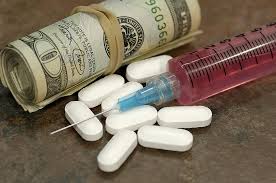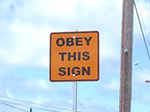Opiate Addiction Program

ORT / MATOD
We offer a specific program to help people give up opioids (heroin & medical opioids - pills), but we can help with any addiction including alcohol, cigarettes, marijuana and benzos.
Please also note our Website Disclaimer Updated 6/8/2023
Opioid replacement treatments are now on PBS. This has significantly lowered costs for patients on methadone and Suboxone supplied in pharmacies, while causing changes (increased costs and limitations) for those on injectable buprenorphine.
We now offer oral methadone and buprenorphine (Suboxone) as well as the new and very convenient LAIB (long-acting injectable buprenorphine) allowing up to monthly dosing by our experienced doctors or nurses. There is now a way to switch from quite high doses of methadone to buprenorphine and injections without withdrawals (See below).
Drug dependence is a complex condition involving social, psychological and biological components. Dependence on opioids is a serious condition associated with severe morbidity and a high risk of death. This risk arises from both drug overdose and the morbidity and injury that result from chronic illicit drug use or misuse of licit opioids. There are two indications for opioid substitution therapy – brief treatment of opioid withdrawal and prolonged maintenance therapy. While the former is used in crisis intervention, only the latter has good correlation with long-term outcomes like remission and recovery.
Maintenance pharmacotherapies can be compared to other drugs that are effective in treating serious, chronic, relapsing conditions such as hypertension and diabetes. These conditions, like opioid dependence, are chronic, require daily treatment over a long duration, and have a high risk of adverse effects if instructions about treatment are not followed.
Addiction is a chronic brain condition. The addicted brain is distinctly, biologically different from the non-addicted brain.
Please look at the pictures on the Addicted Brain page.
The process is not easy - there may well be problems along the way and relapses are unfortunately quite common. However, even after a few relapses, most people who genuinely want to stop using drugs can succeed. The success rate of getting off heroin with the help of methadone or buprenorphine and counselling is quite good provided you actually want to stop using. It is also a good idea to be screened for other chronic conditions frequently associated with SUD including hepatitis C infection (now curable) and adult ADHD which is treatable.
If you don't actually want to stop using heroin, then the program will not work.
Remember that it is YOUR life and YOU must make an effort to get it in order. No-one can do it for you. It means taking RESPONSIBILITY - to get to the chemist, to get scripts on time and to get on with your life including going to work.
Being on opioid replacement therapy is not a reason by itself for a Centrelink certificate.
There have been problems with combined use of opiates and other medications, especially benzodiazepines (Valium, Serepax etc). We need to limit these other medications for your own good.

Rules of the Program
You can expect to be treated like any other patient provided that you are courteous and punctual. This is a general medical practice not a specialised drug rehab centre and it is important that other patients and staff don't feel threatened. Fights in the waiting room will not be tolerated.
It is your responsibility to make sure that you get the scripts at the appropriate times. Doctors do not have time to fax scripts, or your prescriber may not be on duty on the day, or may even be on holidays (especially during school holidays). Once you are stable, doctors generally write scripts to last at least 2 months. You thus have lots of time to get organised to get the script in time. Do not leave it to the last moment.
Please remember that there are many laws associated with drug use and the methadone / buprenorphine program. Doctors cannot and will not take the risk of having legal problems themselves by going outside what is lawful, whether or not the doctor may personally agree with it. This includes the need to reduce use of ALL drugs, including benzodiazepines (Valium, Serepax etc).
Waiting lists to join this program are long and consideration is given to those who are really committed to the program so, accordingly, bulkbilling will only be offered to help you if you show that you are trying.
Non-compliance of the conditions of the program will not be tolerated.
- Followup appointments should be made directly after last doctor visit. Urine drug screen may be required.
- Do not expect to walk into the surgery without an appointment and be seen by the doctor (consideration of others).
- Phone calls and messages with regard to scripts and doses will not be accepted.
- Lost and or stolen scripts will require another appointment and there is no guarantee of replacement, especially of medications. A police report may be required.
- Doctor shopping is now easily detected via the online Government SafeScript program, available to all doctors and pharmacists. It will not be tolerated and is likely to result in your having to find a new provider.
- Routine supervised urine screen is part of the program (3 monthly) or as requested. This is a legal requirement. Failure or refusal to do them will mean reduction or loss of takeaway doses. Continued dirty urine drug screens will mean the end of bulkbilling (payment required in advance) or finding a new provider.
- Rudeness and anti social behaviour within the surgery or the surgery grounds will not be tolerated and will result in the instant termination of the program and need to transfer care to another provider.
- The program is designed to encourage you to take RESPONSIBILITY for yourself by maintaining appointments with doctors, ensuring scripts are current and kept safe. If we feel that you are not serious about the program or non-compliant with requirements, you will be asked to find another prescriber.
- If you turn up intoxicated / drug affected / aggressive, you won't be seen by a doctor.
Monash modified Bernese method to switch from methadone to buprenorphine without withdrawals
The Bernese Microdosing Method and the Monash modification that we use are tapering techniques for transitioning from methadone to buprenorphine. It relies on microdosing buprenorphine so that the methadone is very gradually displaced from the opioid receptors in the brain, without precipitating withdrawal symptoms. The Bernese Microdosing Method, initially developed in Bern, Switzerland, involves gradually reducing the dose of methadone while increasing the dose of buprenorphine over several weeks. The Monash modification is a modified version of the Bernese method, with a slower and gentler transition by starting with a lower dose of buprenorphine and increasing it over a longer period of time. This reduces the risk of withdrawal symptoms and minimises the risk of relapse during the transition. The length of the transition period varies depending on the individual and can take several weeks, but typically about a fortnight. Close monitoring is important to ensure a safe and successful transition.
You continue to take full dose methadone for over a week, depending on your methadone dose. You start with buprenorphine patches which dose 20 micrograms per hour, then transition to Suboxone film and finally reduce and stop the methadone. The doctor will give you a spreadsheet with a detailed dosing schedule, a copy of which you need to give to your pharmacist. It is important that the pharmacist also understands the process and is willing to assist.
| Day | Patch & Suboxone | Methadone |
|---|---|---|
| 1 | Norspan 20mcg/hr & leave on | Full dose |
| 2 | + 20mcg/hr & leave on | Full dose |
| 3 | + 20mcg/hr & leave on | Full dose |
| 4 | + 20mcg/hr & leave on | Full dose |
| 5 | + 20mcg/hr & leave on (TOTAL 5 patches = 100mcg/hr) | Full dose |
| 6 | + Suboxone 1mg BD (total 2mg/day) | Full dose |
| 7 | + Suboxone 2mg BD (total 4mg/day) | Full dose |
| 8 | + Suboxone 4mg BD (total 8mg/day) & REMOVE PATCHES | REDUCE higher of 10% or 10mg |
| 9 | Suboxone 6mg BD (total 12mg/day) | REDUCE higher of 10% or 10mg |
| 10 | Suboxone 8mg BD (total 16mg/day) | CONTINUE REDUCTION OR STOP IF 30MG |
| 11 | Suboxone 12mg BD (total 24mg/day) | STOPPED |
| 12 | Suboxone 16mg AM and START SUBLOCADE / BUVIDAL | STOPPED |
There may be additional days after day 10 depending on the initial methadone dose.